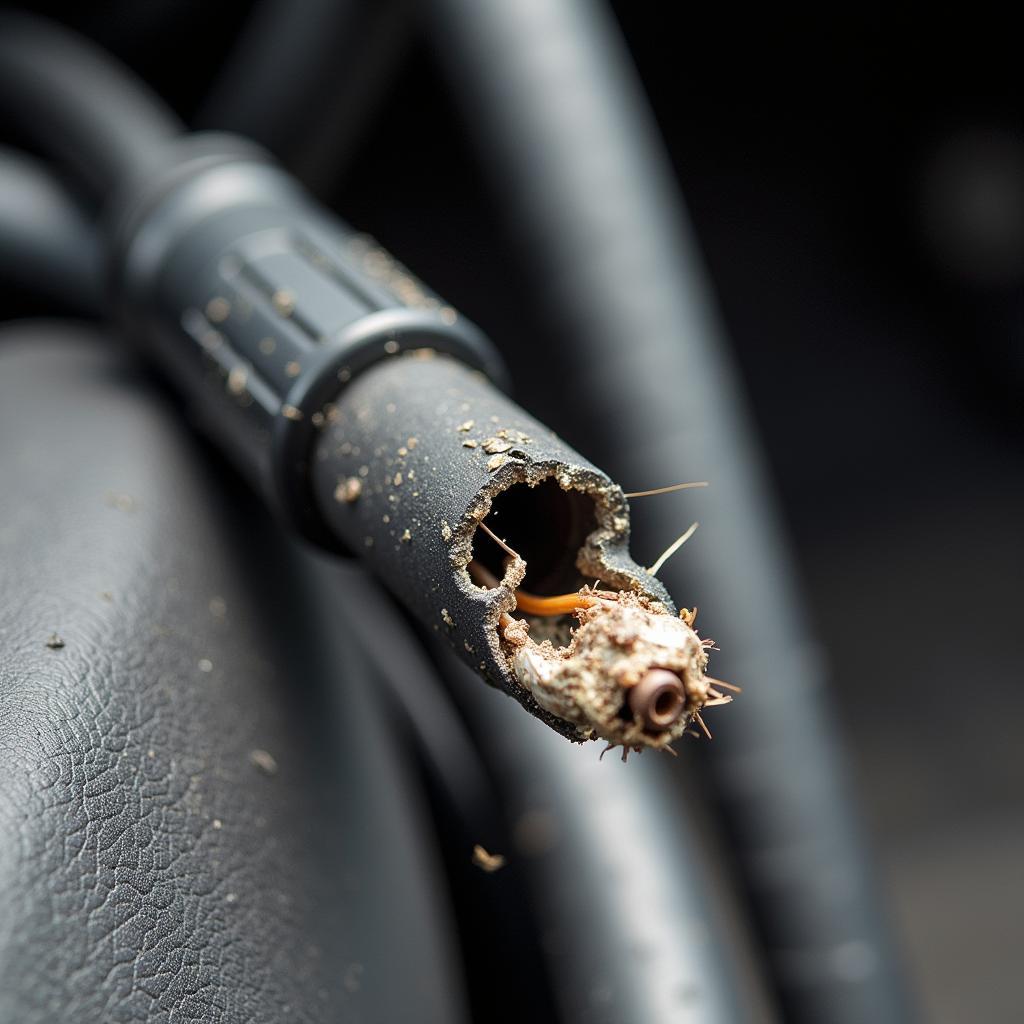Maintaining your car doesn’t always require a trip to the mechanic. Some tasks, like replacing your windshield wiper blades, are surprisingly straightforward. Knowing how to handle this simple DIY car maintenance can save you money and keep your vision crystal clear on the road, especially during those unexpected downpours.
Recognizing Worn Wiper Blades: The Telltale Signs
Before you grab your new wiper blades, it’s essential to confirm if they truly need replacement. Ignoring the signs of worn-out blades can be a safety hazard, reducing visibility during crucial moments. Look out for these indicators:
- Streaking: Those annoying streaks and smears across your windshield are often the first sign of aging wiper blades.
- Chattering: If your blades skip or vibrate across the windshield, their rubber might have hardened, losing its smooth contact.
- Splitting or Cracking: Examine the rubber strips for any visible damage. Cracks and splits mean it’s time for a new set.
- Rounded Edges: Over time, the wiper blade’s edge can become rounded, reducing its effectiveness in clearing water.
Choosing the Right Blades: A Perfect Fit Matters
Selecting the correct wiper blades for your car is crucial for optimal performance. Refer to your car’s owner’s manual or check the information provided on the packaging of wiper blades at your local auto parts store.
Pro Tip from John Miller, Certified Automotive Technician: “Never assume all wiper blades are universal. Using the wrong size can lead to ineffective cleaning or even damage your windshield.”
DIY Wiper Blade Replacement: A Step-by-Step Guide
Replacing your windshield wiper blades is easier than you might think. Just follow these simple steps:
- Lift the Wiper Arm: Carefully lift the wiper arm away from the windshield. They are designed to stay upright, but using a towel to cover the windshield just in case is always a good idea.
- Find the Release Tab: Look for a small tab or button on the underside of the wiper blade where it connects to the arm.
- Detach the Old Blade: Press the release tab and slide the old wiper blade down the arm, disengaging it.
- Attach the New Blade: Align the new blade with the arm and slide it upwards until you hear a click, securing it in place.
- Lower the Wiper Arm: Gently lower the wiper arm back onto the windshield.
- Repeat for the Other Side: Don’t forget to repeat the process for the wiper blade on the passenger side.
- Test Your New Blades: Turn on your windshield wipers to ensure they are functioning correctly and providing a clear view.
Maintaining Your New Wiper Blades: Extending their Lifespan
Now that you have fresh wiper blades, keep them in top shape by:
- Cleaning the Blades: Regularly wipe down your wiper blades with a damp cloth to remove dirt, debris, and grime that can hinder their performance.
- Clean Your Windshield: A clean windshield means your blades won’t have to work as hard, extending their lifespan.
- Don’t Use When Frozen: Never use your wipers to clear ice or frost from your windshield. Use an ice scraper and de-icer fluid to prevent damage.
Conclusion
Mastering the art of DIY car maintenance, starting with windshield wiper blade replacement, empowers you to take charge of your vehicle’s well-being. Regularly inspecting and replacing your blades ensures optimal visibility, keeping you safe on the road. Remember, a little car care goes a long way in preventing bigger issues down the line. If you need help with any car maintenance, don’t hesitate to contact the experts at AutoTipPro. We offer a range of services, from fair car maintenance to more specific needs like car maintenance in Clinton. You can reach us at +1 (641) 206-8880 or visit our office at 500 N St Mary’s St, San Antonio, TX 78205, United States.
FAQs
1. How often should I replace my wiper blades?
Generally, it’s recommended to replace your wiper blades every 6 to 12 months. However, factors like weather conditions and usage can affect their lifespan.
2. Can I replace just one wiper blade?
While possible, it’s best to replace both wiper blades simultaneously to ensure even wiping and consistent performance.
3. What happens if I don’t replace worn wiper blades?
Worn wiper blades compromise visibility, especially during rain or snow, increasing the risk of accidents.
4. Are more expensive wiper blades worth it?
Higher-priced blades often offer better materials, design, and durability, potentially lasting longer and performing better in harsh conditions.
5. Can I get my wiper blades replaced at an auto parts store?
Many auto parts stores offer wiper blade installation services for a small fee, saving you the hassle if you prefer.







Leave a Reply